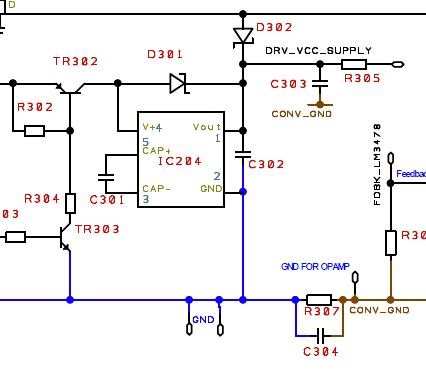Dear all:
I used LM2767, input 3.2v voltage, output 6.4v power supply for other chips.Now more than 1000 pieces have been produced. During the test, it was found that 15 pieces were damaged, with input voltage but no output.Then change new LM2767 can work normally.The following is my schematic diagram, bit number IC204 is LM2767
Please help to analyze what causes the damage?Does the fourth pin input of LM2767 chip need capacitance?I used the oscilloscope to see the peak voltage of 5.85v at the input voltage of the 4th pin at the moment of starting up



